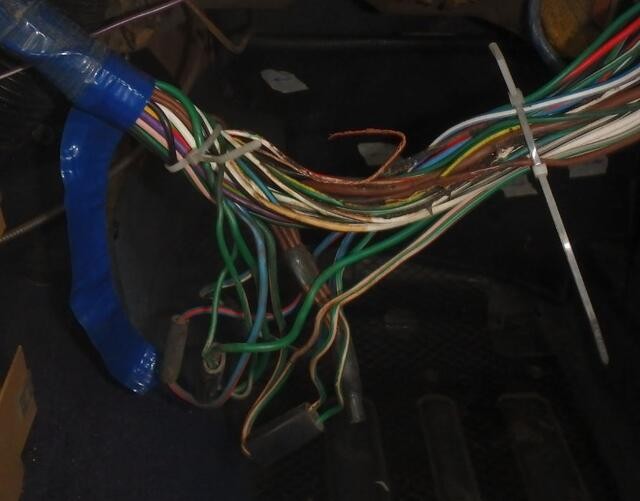Understanding your car’s electrical system can feel like navigating a labyrinth. But with the right tools, like Car Wire Diagrams, even the most daunting electrical issue can be diagnosed and resolved. This guide explores the importance of these diagrams, where to find them, and how to use them effectively.
Why Car Wire Diagrams Are Essential for Classic Car Owners
Car wire diagrams are essentially roadmaps of your vehicle’s electrical system. They illustrate the intricate network of wires, connectors, fuses, and components, showing how electricity flows throughout your car. For classic car owners, these diagrams are especially crucial for several reasons:
- Troubleshooting Electrical Problems: When electrical gremlins strike, a wiring diagram helps pinpoint the source of the issue. Whether it’s a faulty turn signal, a non-starting engine, or a flickering headlight, the diagram guides you through the system to identify the culprit.
- Restoring Originality: Classic car restorations often involve rewiring or repairing original harnesses. A correct wiring diagram ensures that the electrical system is rebuilt to factory specifications, preserving the car’s authenticity.
- Making Modifications: Adding accessories or upgrading electrical components requires a clear understanding of the existing wiring. A car wire diagram allows you to safely and effectively integrate new elements without causing unintended consequences.
- Understanding the System: Even without a specific problem, studying your car’s wiring diagram provides valuable insight into how the various systems interact. This knowledge empowers you to maintain and care for your classic car more effectively.
Where to Find Car Wire Diagrams for Your Classic Car
Sourcing accurate car wire diagrams is vital. Here are some reliable options:
- Owner’s Manual: The original owner’s manual often includes a basic wiring diagram. However, it might not be as detailed as other sources.
- Repair Manuals: Dedicated repair manuals, such as Haynes or Chilton, typically provide comprehensive wiring diagrams specific to your car’s year and model.
- Online Resources: Websites specializing in classic cars often offer downloadable wiring diagrams, sometimes for free. Advance Auto Wire (AAW) is a popular example for MGB diagrams. Always verify the accuracy of online diagrams before relying on them.
- Classic Car Clubs: Enthusiast clubs dedicated to specific makes and models are invaluable resources. Members often share wiring diagrams and offer expert advice.
- Automotive Parts Stores: Some auto parts stores can access and print wiring diagrams for your car.
Deciphering the Diagram: How to Use Car Wire Diagrams
 alt
alt
Car wire diagrams can appear complex at first glance, but understanding the key elements makes them much easier to navigate:
- Symbols: Diagrams use standardized symbols to represent different components, such as batteries, switches, relays, and grounds. Familiarize yourself with these symbols to interpret the diagram accurately.
- Wire Colors: Wires are typically represented by color codes. The diagram will indicate the color of each wire, making it easier to trace connections in the real world.
- Connectors: Bullet connectors and other types of connections are shown on the diagram, revealing how wires are joined together.
- Fuse Boxes: The diagram will depict the location and arrangement of fuses within the fuse box. This is essential for identifying blown fuses.
- Component Locations: Some diagrams indicate the physical location of components within the car, further aiding in troubleshooting.
Tips for Working with Car Wire Diagrams
- Enlarge and Laminate: Print the diagram on a large sheet of paper and laminate it for durability and ease of use in the garage.
- Use a Highlighter: As you trace circuits, use a highlighter to mark the path of the wires you are following.
- Cross-Reference: Refer to the diagram’s legend to understand the symbols and abbreviations used.
- Start Simple: Begin with a basic circuit, such as the headlights, to gain confidence in reading the diagram.
- Seek Expert Advice: If you encounter difficulties, don’t hesitate to consult with experienced classic car mechanics or fellow enthusiasts.
Conclusion
Car wire diagrams are indispensable tools for any classic car owner. By understanding how to use them, you can confidently tackle electrical issues, restore your car to its former glory, and enjoy the open road with peace of mind.
